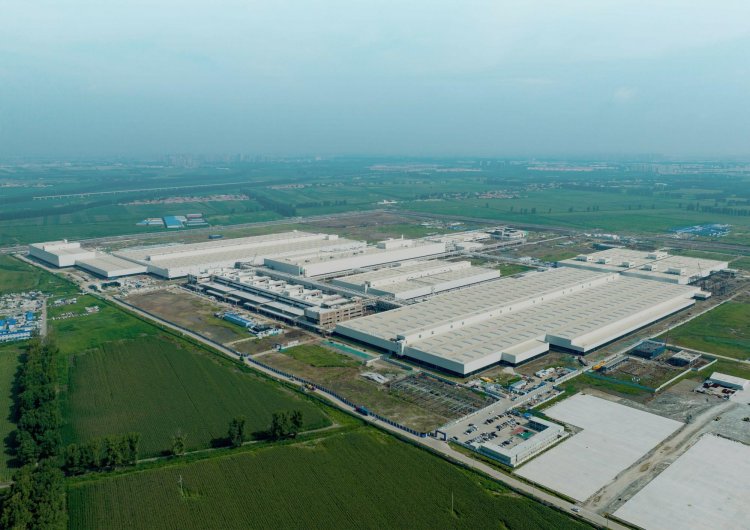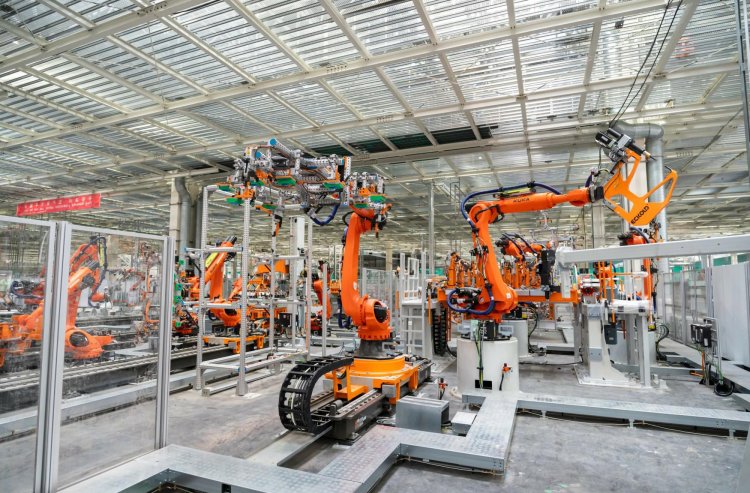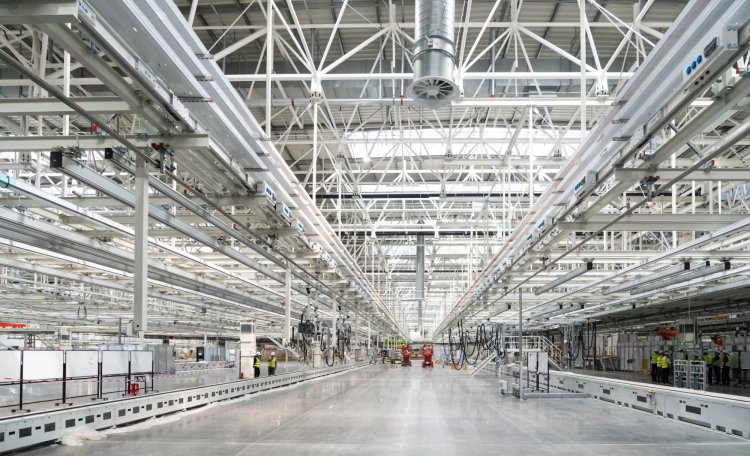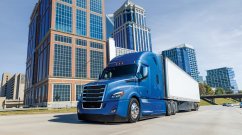Construction of Audi FAW NEV Company in Changchun, China, is advancing according to plan. In June 2022, the joint company of brand with the four rings and its Chinese partner FAW (First Automotive Works) laid the cornerstone for the new production site. The factory exclusively produces all-electric Audi models. With its state-of-the-art facility, the company aims to set new standards in digitalization, efficiency, and sustainability.
Milestones achieved and next steps
- March 2021: Audi and FAW Group establish Audi FAW NEV Company in Changchun as the first joint company in China in which Audi holds a majority stake.
- June 2022: Audi FAW NEV Company begins construction of the new production site. Twenty buildings are to be built on the grounds.
- November 2022: The roofing ceremony marks the successful completion of the building shells.
- September 2023: Audi FAW NEV Company opens the Test Center Changchun, one of the most advanced Audi testing centers worldwide. It offers the capacity for the simultaneous operation of up to 70 test vehicles.
- End of 2023: The company aims to complete the construction of the factory and the installation of all production facilities, including a total of around 1,000 robots, an automated high-bay warehouse, heavy-duty machine presses, and camera-based monitoring systems.
- 2024: Personnel will move into the new facilities. The production steps are tested in detail and prepared for series production.
- End of 2024: Series production of the first all-electric models based on the Premium Platform Electric (PPE) is scheduled to commence.
- Spring 2025: The market launch of the first fully electric Audi model built at the new production site is planned for the beginning of 2025.
Overview: plant, products, and employees
- The new plant covers an area of around 154 hectares – making it slightly larger than the Audi plant in Neckarsulm.
- The plant can produce up to 150,000 fully electric Audi models based on the PPE for the Chinese market annually.
- Production will start with three models from the Audi A6 e-tron and Q6 e-tron series.
- Production will encompass the entire automotive production value chain, from press shop, body shop, and paint shop to assembly.
- The site will also include a battery assembly facility where high-voltage batteries for the China-specific PPE models are produced.
- To keep logistics distances short, a large proportion of suppliers will be established within 30 kilometers of the company. One measure to this end is the development of an exclusive supplier park next to the factory.
- Audi FAW NEV Company will attract and foster international talent: When production commences, around 3,000 employees of various nationalities will work at the new plant.
- Board of Management Audi FAW NEV Company: Helmut Stettner (CEO), Harald Sprehe (Procurement and IT), Sabine Moch (Finance and Compliance), Wang Kaiyu (Production and Logistics), Gao Kun (Human Resources and Organization).
Digital construction and operation
- From the start, Audi has designed and planned the production facilities using digital methods and tools, including digital twins and 3D technology. This way, detailed requirements for workshops, production lines, and other infrastructure could be considered at an early design stage.
- International collaboration thanks to VR technology: Construction experts from Ingolstadt are able to visit the construction site virtually and discuss the current state of construction in real time with their colleagues in China thanks to virtual reality.
- In a first for the Volkswagen Group, all maintenance, logistics, and manufacturing processes at one site will be interconnected via a single IT architecture.
- Millions of data points will be integrated and shared on a central control platform. Intelligent fault detection, real-time monitoring, and prediction algorithms make production more reliable.

















